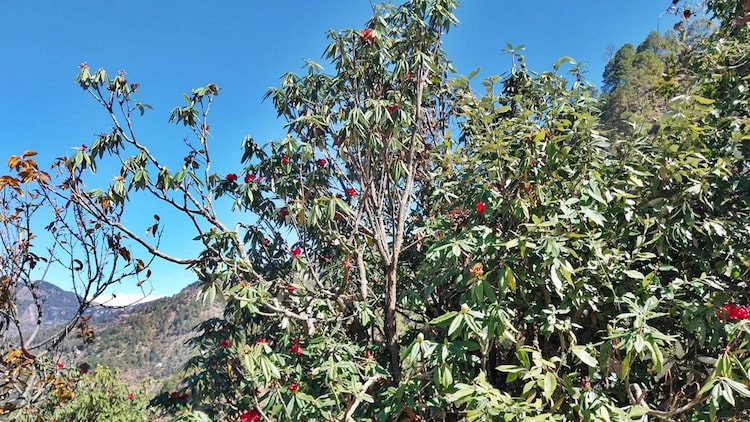
As the world grapples with the effects of climate change, the hills are one of the biggest victims, and the latest evidence comes in the form of a flower.
Buransh, Uttarakhand’s state tree, has blossomed earlier than expected, raising concerns among scientists and environmentalists.
The tree, scientifically known as Rhododendron, is known for its vibrant display of red flowers that dominate these hills as it bursts out from the woody bushes of the tree.
_______________________________________________________________________
Read Also : 5 sustainable farming methods assessed
________________________________________________________________________
Normally, these flowers are seen to blossom during March and April across the mid-altitude terrain. However, this year, the pattern seems to be changing drastically. According to scientists at ICAR-Central Soil Salinity Research Institute, this is pseudo-flowering or forced flowering due to climatic shifts.
“There is a climatic shift, what you call climate change, happening as is visible this winter in the form of a very long dry spell and high day temperature through January. The temperature rise has been very high, up to 4 to 5 degrees during the day this year. As a result, January saw the March weather conditions, hence inducing early flowering of Buransh,” Dr Pankaj Nautiyal, Senior Scientist and Head at Krishi Vigyan Kendra (ICAR-CSSRI) said.
GROWING CONCERNS
The untimely blossoming has raised concerns regarding potential reductions in the medicinal potency of the flower. Renowned for its abundance of potassium, calcium, iron, and vitamin C, this flower is also ingested as an appetiser to alleviate mountain sickness and seasonal ailments.
_______________________________________________________________________
Read Also : Sustainable Farming Techniques: Do They Really Help?
________________________________________________________________________
It is recognised for its effectiveness in mitigating excessive bleeding during menstruation in women. The flower possesses medicinal properties beneficial for the heart, liver, skin allergies, and antiviral purposes.
In the region, locals have been incorporating Buransh juice and Buransh chutney into their diet for their potent antioxidant, anti-inflammatory, and anti-diabetic characteristics during the transition from winter to spring.
“Early blooming will also have an impact on the medical value and the production of nectar from this flower. The impact goes further on the livelihoods of a sector that is dependent on selling the juice of this flower in the form of squash and other edible products in the region and both the quality and quantity of the produce of this flower is being impacted due to early blooming,” Dr Pankaj Nautiyal, Senior Scientist at Krishi Vigyan Kendra added.
NOTE – This article was originally published in indiatoday and can be viewed here








